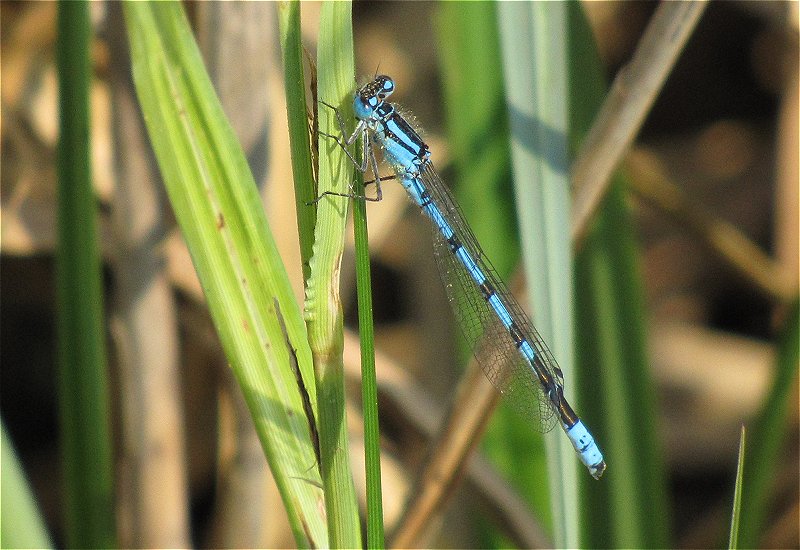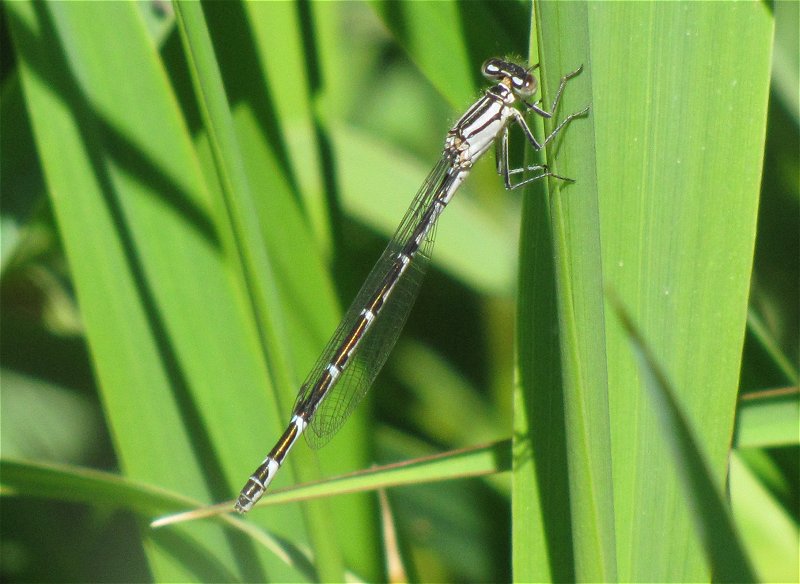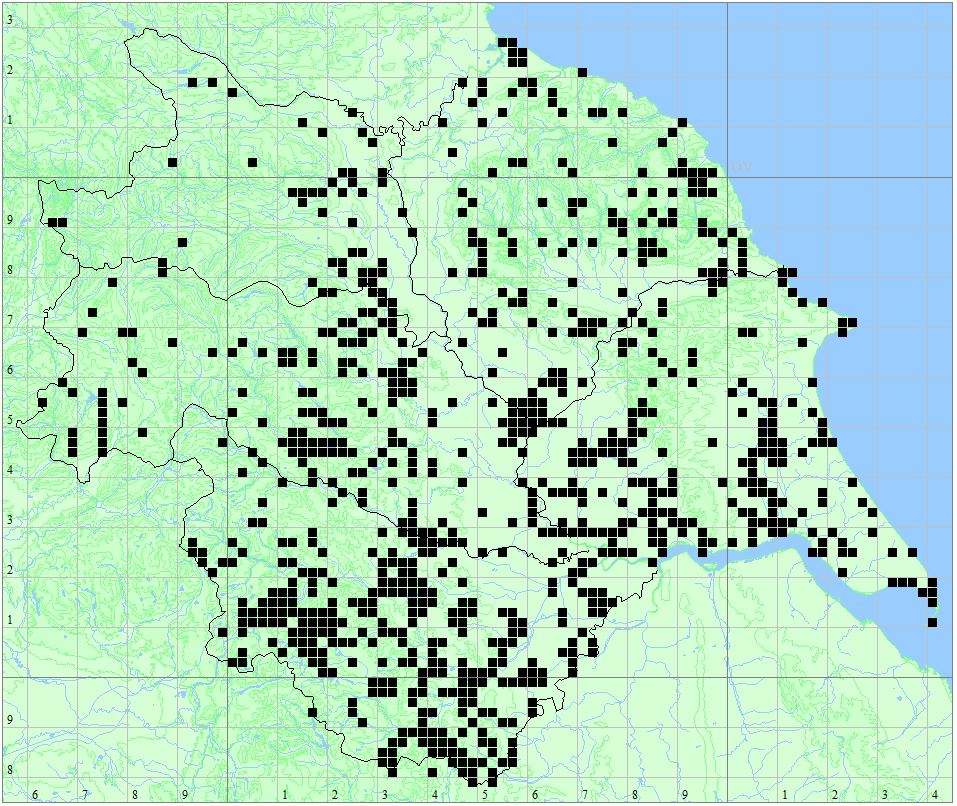<-Previous Species – Next Species->
Length
32mm, Wings 36-42mm
Male
Bright blue body with black markings on upper surface of abdomen, segment 2 has lollipop mark; segment 8 and 9 all blue; broad antehumeral stripes on black thorax; eye spot linked by bar.
Female
3 colour forms:-
1) abdomen with black markings.
2) Green with black markings.
3) Brown with black markings. All have characteristic medial spine under segment 8, presumably puncturing plant material before inserting an egg.
Habitat
Large ponds and lakes are the main preference for this species. Can also be found along canals and rivers, but will also tolerate brackish conditions. The most abundant Zygoptera found in open areas.
Behavior
The most dominant species on large lakes and reservoirs, swarming over the waters surface far from the banks in sunny conditions. Readily settles on emergent vegetation and is aggressive towards others, even driving away larger species. Copulation lasts for around 20 minutes, frequently away from water. Oviposits into submerged and emergent vegetation, usually in tandem. If the female submerges the male will uncouple, guarding the area waiting for her to re-emerge. Females can submerge for up to an hour. Larvae live amongst submerged vegetation emerging after 1-3 years. They mature in surrounding areas over a period of around 12 days.
Flight Period
Status
Occurs on a wide range of varying water-bodies. Can be more conspicuous than the similar Azure Damselfly. Blue damselflies ranging far over open water are usually this species. Generally the most abundant blue damselfly at sites, where the Azure can be absent.
Distribution Map
Locations
- Rodley Nature Reserve
- Moorgates Quarry LNR
- Thorne Moors – Humberhead Peatlands NNR
- Thorpe Marsh
- Oakhill & Goole Brick Ponds
- Paull Holme Strays
- Treeton Dyke
- Rabbit Ings
- River Foss, Towthorpe Bridge
- Walton Colliery Nature Park
- Pugneys Country Park
- The Yorkshire Arboretum
- Hurst Dam
- Nosterfield Local Nature Reserve
- Timble Ings
- Fairburn Ings
- Johnny Brown’s Common
- Potteric Carr
- Dundale Pond
- The Tarn, Goathland
- Fen Bog
- Spurn Point
- Skipwith Common
- Saltmarshe Delph
- Pulfin and High Eske Nature Reserve
- Pocklington Canal
- Oak Road Lake, Hull
- North Cave Wetlands
- Market Weighton Canal and Newport Ponds
- Leven Canal
- Hornsea Mere
- Filey Dams
- Eastrington Ponds
- Broomfleet Washlands
- Noddle Hill Nature Reserve
- Allerthorpe Common
- Tophill Low Nature Reserve


